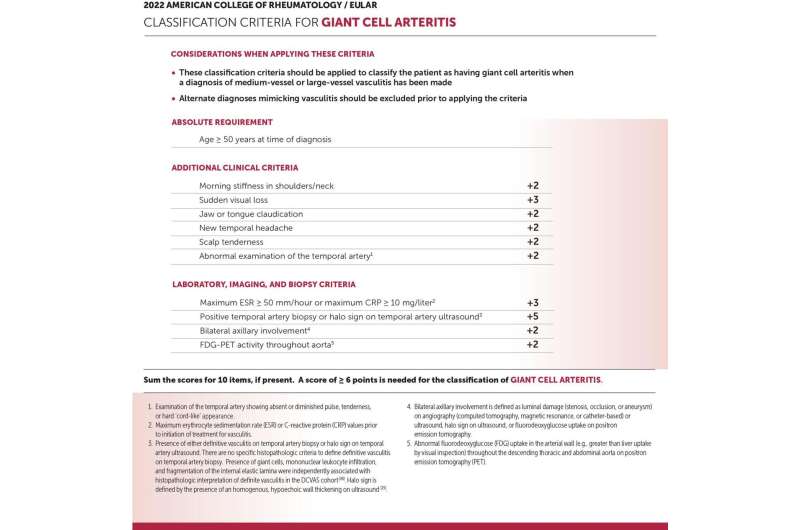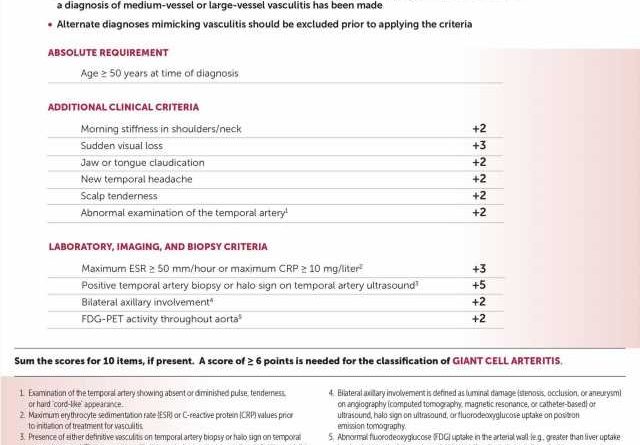Updated: Giant cell arteritis classification criteria

Giant cell arteritis is the most common form of systemic vasculitis in people over the age of 50. It affects large‐ and medium‐sized blood vessels, particularly in the head—although not exclusively. Common symptoms include headache, jaw pain, scalp tenderness, and visual disturbances.
Classification criteria are not the same as diagnostic criteria. Diagnostic criteria are typically a set of symptoms and tests that can be used in everyday clinical practice to make a diagnosis of a particular disease. But classification criteria are used to make sure that a homogeneous or consistent population is selected for trials and research. This makes it possible to draw valid interpretations and conclusions from smaller samples of people than would be possible if the research population was very heterogeneous.
The previous ACR classification criteria for giant cell arteritis were published by the ACR in 1990, before the widespread use of vascular imaging techniques. The updated classification criteria are intended to reflect modern clinical practice. EULAR and ACR worked together to gather an international group of experts in vasculitis.
Statisticians and data managers also took part to oversee the overall development of these updated classification criteria for primary vasculitis. The final stage of the process was to validate the new classification criteria by testing it in a series of cases and comparators. Importantly, this testing phase showed that the new EULAR/ACR classification criteria outperformed the previous ones.
The resulting classification criteria should be used, for study purposes, to confirm that someone has giant cell arteritis when a diagnosis of medium- or large-vessel vasculitis has already been made. The absolute requirement for classification is being aged 50 or younger at the time of diagnosis. The new document then lays out two sets of additional criteria.
Each of these ten items gives a score of 2–5. The additional clinical criteria include morning stiffness in the shoulders or neck, as well as sudden visual loss or pain the jaw or tongue. The additional laboratory, imaging and biopsy criteria set out thresholds for inflammatory markers, as well as the single most highly scoring item: a positive temporal artery biopsy or halo sign on temporal artery ultrasound. If a person has a total score of 6 or more over the ten items, then they can be classed as having giant cell arteritis.
The new classification criteria reflect current clinical practice, including modern imaging techniques, and with a specific age threshold. They have been endorsed by both EULAR and the ACR and are now ready for use. EULAR hopes they will support important new research in this field and help improve the quality of results.
The work is published in the journal Annals of the Rheumatic Diseases.
More information:
Cristina Ponte et al, 2022 American College of Rheumatology/EULAR classification criteria for giant cell arteritis, Annals of the Rheumatic Diseases (2022). DOI: 10.1136/ard-2022-223480
Journal information:
Annals of the Rheumatic Diseases
Source: Read Full Article



